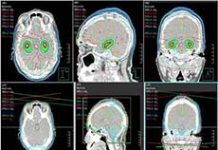From September to December 2021, the International Agency for Research on Cancer (IARC) convened a working group of 25 scientists from 14 countries to evaluate the body of evidence on primary and secondary prevention of oral cancer. In a special report published on 18 October 2022 in The New England Journal of Medicine, the working group wrote that they have established that cessation of tobacco smoking, alcohol consumption, and areca nut use will contribute to significant reductions in the risk of oral cancer. However, they also highlight the paucity of data in the area of oral cancer prevention and call for additional research in all aspects of such preventive work. Preventive measures will contribute to the overall objective of the resolution on oral health adopted by the World Health Assembly in May 2021 to control and prevent oral diseases, including oral cancer, by 2030.
In 2020, cancer of the lip and oral cavity was estimated to rank 16th in incidence and mortality worldwide and was a common cause of cancer death in men across much of South and Southeast Asia and the Western Pacific. A wide range of genetic, environmental, and behavioural factors contribute to the risk of oral cancer. Risks are dominated by tobacco, both smoked and smokeless, and heavy alcohol consumption. In Southeast Asia and the Western Pacific Islands, where the incidence of oral cancer is high, the major risk factors are use of smokeless tobacco and areca nut products including betel quid. Approximately 2% of oral cancer worldwide is caused by human papillomavirus infection, primarily HPV16.
The IARC working group reviewed all relevant published studies and evaluated the evidence according to the updated preambles of the IARC Handbooks of Cancer Prevention. In addition, to strengthen the current published evidence with respect to areca nut products, the working group performed primary analyses of unpublished data from large studies. In the article published in The New England Journal of Medicine, they provide a brief overview of findings from the studies that were reviewed and the outcomes of the evaluation process.
In this first evaluation of oral cancer prevention by the IARC Handbooks programme, the working group found that tobacco smoking, and alcohol consumption are the main drivers of oral cancer in most countries. However, the use of smokeless tobacco and chewing of areca nut products are the leading causes in many countries, especially in South and Southeast Asia and in the Western Pacific Islands. In these areas, the use of products (which may contain smokeless tobacco only, areca nut only, or both) vary widely in their nature and toxicity profile. In the available studies, a lack of detail regarding the composition of these products posed a challenge for the interpretation and evaluation of the current evidence.
Overall, the authors reported sufficient evidence that quitting tobacco smoking decreases the risk of oral cancer and that the risk decreases with increasing time since smoking cessation. However, there was inadequate evidence that cessation of smokeless tobacco decreases the risk of oral cancer. There was sufficient evidence that the cessation of use of areca nut products with or without tobacco decreases the risk of oral cancer. Cessation of the use of areca nut products with or without tobacco also decreases the risk of oral potentially malignant disorders.
There was sufficient evidence that quitting alcohol consumption decreases the risk of oral cancer and that the risk decreases with increasing time since quitting. The authors commented that cessation of tobacco smoking, and alcohol consumption has a preventive effect on the incidence of oral cancer and probably also decreases the risk of oral potentially malignant disorders. Given that the combined effect of tobacco smoking, and alcohol consumption is greater than multiplicative, smoking cessation reduces the risk of oral cancer in persons who continue drinking alcohol.
The authors also commented that the benefits of cessation in the use of areca nut products with or without tobacco have been established. Given interaction effects, large risk reductions would also be expected after smoking cessation in users of these products. Evidence for the benefits of cessation in the use of smokeless tobacco alone was inadequate because of the lack of studies in relevant geographic areas.
There was sufficient evidence that behavioural interventions in adults are effective in inducing cessation in the use of smokeless tobacco. There was limited evidence that behavioural interventions in youth are effective in inducing cessation in the use of smokeless tobacco. There was limited evidence that pharmacologic interventions with nicotine replacement therapy or antidepressants are effective in inducing cessation in the use of smokeless tobacco or areca nut products. There was limited evidence that combined pharmacologic and behavioural interventions were effective in inducing cessation of smokeless tobacco use.
The effect of primary interventions for cessation of use of these products is specific to the country, culture, age, and sex of the target population. Very few studies were available in populations that commonly use areca nut with tobacco. Therefore, the evaluations were limited to cessation of smokeless tobacco alone. As compared with adults, youth who initiate the use of smokeless tobacco often do not perceive tobacco as harmful and have high receptivity to tobacco advertising. So, it is very important that education about harms of using these products focus on youths.
Clinical oral examination is the only screening method that is routinely used for the detection of oral cancer and oral potentially malignant disorders. Clinical oral examination consists of a white-light visual examination and palpation of the oral cavity mucosa and the external facial and neck regions. The importance of the role of well-trained health care workers in the performance of clinical oral examinations was noted. Screening of high-risk persons by clinical oral examination may reduce mortality from oral cancer.
Clinical oral examination enables detection of oral cancer and oral potentially malignant disorders relatively early in their evolution. Currently, no better screening alternative exists. The authors commented that the highly variable natural history of oral potentially malignant disorders at the individual level poses a challenge in extrapolating data to important endpoints such as mortality. Evidence is still lacking with respect to whether adjunctive optical techniques or biomarkers can reduce false positive screening results.
The evaluation of the potential for clinical oral examination to reduce oral cancer mortality applies to high-risk persons only. Its effect in the general population cannot be established based on current evidence. Screening performed by trained primary health care workers in low-resource settings has shown good results on early disease detection. Opportunistic screening in dental practices in locations where health care resources are high may also be effective, although the evidence is scarce. The use of risk-based models for screening could be an appropriate approach for communities with a high incidence of oral cancer, although the authors acknowledged that selection of participants is challenging.
Reference
Bouvard V, Nethan ST, Singh D, at al. IARC Perspective on Oral Cancer Prevention. NEJM; Published online 18 October 2022. DOI: 10.1056/NEJMsr2210097








